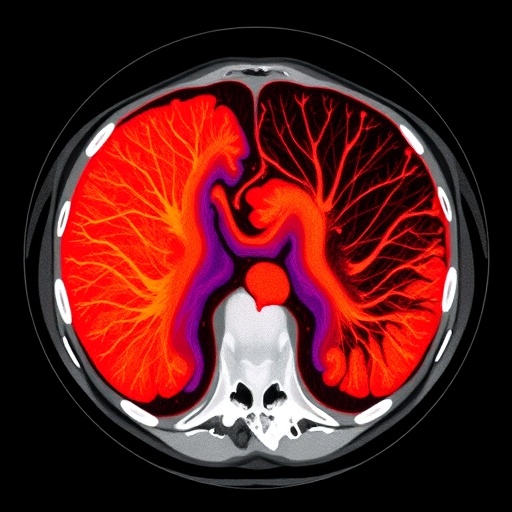In the rapidly evolving field of medical imaging, the implementation of artificial intelligence (AI) and machine learning (ML) techniques brings transformative potential, particularly in the domain of low-dose computed tomography (LDCT). The research conducted by Chauhan, Malik, and Vig has meticulously examined the ways in which these technologies can enhance LDCT reconstruction, an area pivotal for reducing radiation exposure while maintaining image quality for diagnostic purposes. The systematic literature review they conducted reveals insights into a pressing need to optimize these advanced algorithms for improved clinical outcomes.
LDCT plays a significant role in routine clinical practice, especially for lung cancer screening, where patients undergo frequent scans to monitor for early signs of malignancy. However, the challenge lies in balancing the need for high image quality with minimizing radiation dosage. Traditional reconstruction techniques often fall short, unable to sufficiently address the trade-off between image clarity and patient safety. In this context, the advent of AI and ML techniques promises not just an evolution in imaging technology, but a potential revolution in how physicians interpret scan results and make clinical decisions.
The review highlights various machine learning models that have been proposed to enhance LDCT image reconstruction. These models capitalize on sophisticated algorithms capable of learning patterns from vast datasets, thereby producing high-fidelity images from the inherently noisy data associated with low-dose scans. The authors discuss numerous studies where AI-driven approaches have demonstrated significant improvements in image quality over conventional algorithms, leading to more accurate clinical assessments. The evidence compiled in the literature indicates that integrating these technologies in clinical practices is not only feasible but also advantageous.
Among the key findings of this review is the demonstration of how neural networks, particularly convolutional neural networks (CNNs), excel in image reconstruction tasks. CNNs are designed to automatically and adaptively learn spatial hierarchies of features from images, making them highly suited for intricate imaging assignments like LDCT. The authors cite several examples where CNNs have been effectively utilized to achieve superior noise reduction and edge enhancement, pivotal in diagnostic scenarios where detail is paramount.
Furthermore, the review discusses the types of training datasets necessary for developing effective AI models in this context. Open-access datasets that include a wide range of conditions and variables play a crucial role in enabling AI systems to generalize beyond the specifics of a narrow training set. The diversity in datasets helps create robust models that can perform well across different patient populations and imaging scenarios. Understanding the optimal configurations of these datasets is essential for researchers and clinicians looking to leverage AI in their practices.
The authors also delve into the technical intricacies involved in implementing AI solutions for LDCT reconstruction. They address challenges such as computational demands, the intricacies of training machine learning models, and the need for collaboration among multidisciplinary teams, including radiologists, data scientists, and IT specialists. The intersection of these disciplines is crucial for overcoming barriers to successful implementation, ensuring that the technologies are not only effective but also clinically viable.
Private and public institutions are beginning to invest heavily in the development of AI technologies for medical imaging. The review captures a growing trend in funding initiatives aimed at fostering collaborations between academia and industry, indicating a shift in the landscape of medical imaging research. With increased resources being allocated, there is an urgent necessity to establish strong ethical frameworks and guidelines to govern the use of AI in healthcare.
Moreover, Chauhan, Malik, and Vig point out that regulatory considerations are imperative as innovation accelerates in the field. The adaptation of AI technologies into healthcare must align with rigorous approval processes to ensure patient safety and efficacy. As techniques like LDCT reconstruction are integrated into clinical workflows, regulatory bodies will need to adapt to provide comprehensive oversight that fosters innovation while safeguarding patient interests.
The systematic review does not shy away from addressing the limitations of current research and the potential pitfalls ahead. For instance, while many studies demonstrate promising results, there is still a need for large-scale clinical trials to validate the findings. Furthermore, variability in image quality across different imaging systems poses challenges for developing universally applicable AI models. Continuous efforts to standardize imaging protocols will assist in achieving consistent outcomes across various healthcare settings.
As the landscape of diagnostic imaging continues to shift due to technological advancements, the review calls for an ongoing dialogue among clinicians, technologists, and researchers. The collaborative efforts are essential not only for developing better algorithms but also for educating healthcare professionals about the capabilities and limitations of AI tools. As healthcare systems become increasingly data-driven, the importance of training and outreach cannot be overstated.
Ultimately, this literature review by Chauhan et al. serves as a vital resource for understanding the future of LDCT reconstruction through AI and ML techniques. It underlines the significance of these tools in enhancing diagnostic accuracy while prioritizing patient safety. The implications for patient care are profound, as improved imaging techniques can lead to earlier detection of conditions like lung cancer, significantly impacting treatment outcomes.
In conclusion, the intersection of AI, ML, and medical imaging is creating new paradigms in healthcare. As this field progresses, it is critical for the scientific community to remain informed and engaged with these innovations, actively participating in dialogues that shape their implementation in clinical settings. With promising advancements on the horizon, the future of LDCT reconstruction appears bright, heralding a new era of patient-centered, precision medicine.
Subject of Research: AI/ML techniques in servicing LDCT reconstruction
Article Title: Correction: AI/ML techniques in servicing LDCT reconstruction: a systematic literature review.
Article References: Chauhan, S., Malik, N. & Vig, R. Correction: AI/ML techniques in servicing LDCT reconstruction: a systematic literature review. Discov Artif Intell 5, 234 (2025). https://doi.org/10.1007/s44163-025-00524-1
Image Credits: AI Generated
DOI: 10.1007/s44163-025-00524-1
Keywords: AI, machine learning, LDCT, image reconstruction, medical imaging, convolutional neural networks, diagnostic imaging, healthcare technology, patient safety, imaging protocols, clinical trials, data science, ethics in AI.




